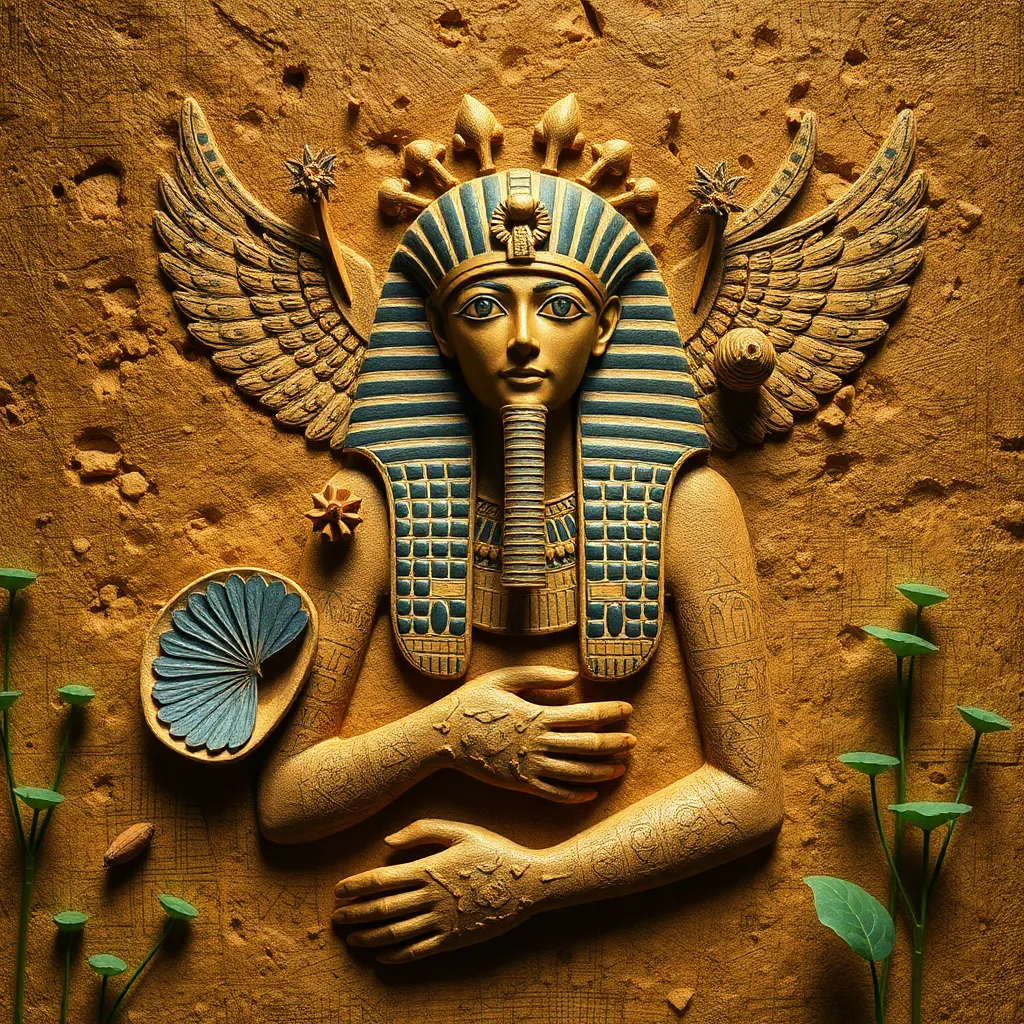The Use of Plants in Egyptian Mummification Processes
I. Introduction
Mummification in ancient Egypt was a complex and sacred process that aimed to preserve the body for the afterlife. This practice reflected the Egyptians’ deep-seated beliefs about life, death, and the journey beyond. One of the critical components of mummification was the use of various plants, each chosen for their unique properties and significance.
This article explores the essential role that plants played in the mummification process, detailing their historical context, chemical properties, and symbolic meanings. By examining these aspects, we gain a deeper understanding of ancient Egyptian funerary practices and their lasting legacy.
II. Historical Context of Mummification
The significance of mummification in Egyptian culture cannot be overstated. It was believed that preserving the body was essential for the soul’s journey in the afterlife, which was a central theme in Egyptian religion and mythology.
Over time, mummification techniques evolved, influenced by changes in religious beliefs, social customs, and advancements in knowledge. Initially, bodies were simply buried in the sand, but as the practice evolved, more sophisticated methods were developed, including the use of natron for dehydration and embalming fluids.
Religion played a crucial role in this process, as the Egyptians believed that the afterlife held great importance. The preservation of the body ensured that the deceased could enjoy an eternal existence, which was a fundamental tenet of their belief system.
III. Common Plants Used in Mummification
Several key plant species were integral to the mummification process. These plants were valued for their preservative qualities, fragrance, and symbolic meanings. Some of the most notable plants include:
- Myrrh: This aromatic resin was highly prized for its antibacterial properties and was commonly used in embalming mixtures.
- Cedar: Cedar wood and its oil were utilized for their preservative qualities and pleasant scent, believed to ward off decay.
- Frankincense: Often used in religious rituals, its resin was also employed in mummification for its aromatic properties and potential preservative effects.
- Juniper: This plant was noted for its antiseptic properties and was sometimes used in the embalming process.
In addition to these, oils and extracts from various plants played a critical role in preservation. They were used to anoint the body and were often mixed with resins to create powerful embalming solutions.
IV. The Chemical Properties of Plants
The effectiveness of plants in mummification can be attributed to their chemical properties. Many plants used in the embalming process possess antimicrobial properties that help prevent decay. For example:
- Myrrh contains compounds that inhibit bacterial growth, making it ideal for preserving organic materials.
- Essential oils extracted from cedar and other plants not only provided fragrance but also contributed to the dehydration of tissues, which is crucial in mummification.
The interaction between plant substances and human tissues also played a significant role in preservation. Oils and resins could penetrate cellular structures, creating a barrier against microbial invasion and environmental factors that contribute to decomposition.
V. Ritualistic and Symbolic Uses of Plants
Plants in ancient Egypt were not merely functional; they also held deep ritualistic and symbolic significance. In funerary rituals, specific plants were used to honor the dead and facilitate their journey to the afterlife.
Some notable symbolic uses of plants included:
- Lotus: Symbolizing rebirth and resurrection, the lotus was often associated with the sun god Ra and featured prominently in funerary art.
- Papyrus: Representing life and fertility, papyrus was commonly used in the creation of scrolls that contained spells and prayers for the deceased.
Offerings of plants were also significant in burial practices, as they were believed to provide nourishment for the deceased in the afterlife. Such offerings underscored the Egyptians’ belief in the continuity of life beyond death.
VI. Regional Variations in Plant Use
Plant usage in mummification varied across different Egyptian dynasties, influenced by geographical factors and the availability of certain species. For instance:
- In regions with abundant cedar trees, such as Lebanon, the use of cedar wood became more prominent in mummification.
- In contrast, areas rich in myrrh and frankincense saw these resins being favored for embalming practices.
Additionally, the influence of neighboring cultures and civilizations, such as the Greeks and Romans, led to the adoption and adaptation of certain practices, showcasing a rich tapestry of cultural exchange.
VII. Archaeological Discoveries and Modern Research
Archaeological discoveries have shed light on the use of plants in ancient Egyptian mummification. Excavations of tombs have revealed residues of various plant materials, providing insight into the embalming techniques used by ancient Egyptians.
Recent advances in technology, such as gas chromatography and mass spectrometry, have allowed researchers to analyze these residues more effectively, leading to a better understanding of the specific plants used in different periods.
Notable case studies, such as the examination of the remains of Tutankhamun, have provided valuable information about the complex interplay of plants and mummification practices in ancient Egypt.
VIII. Conclusion
The use of plants in Egyptian mummification processes was multifaceted, encompassing practical, chemical, and symbolic dimensions. Plants not only aided in the preservation of the body but also played a crucial role in the rituals and beliefs surrounding death and the afterlife.
Reflecting on the legacy of Egyptian mummification practices, we see a profound appreciation for nature and its properties, coupled with a deep spiritual understanding of existence beyond physical life. As research continues, we can anticipate further discoveries that will illuminate the intricacies of these ancient practices.
Future research directions may delve into the comparative analysis of plant use in mummification across different ancient cultures, enriching our understanding of human practices related to death and the afterlife.




